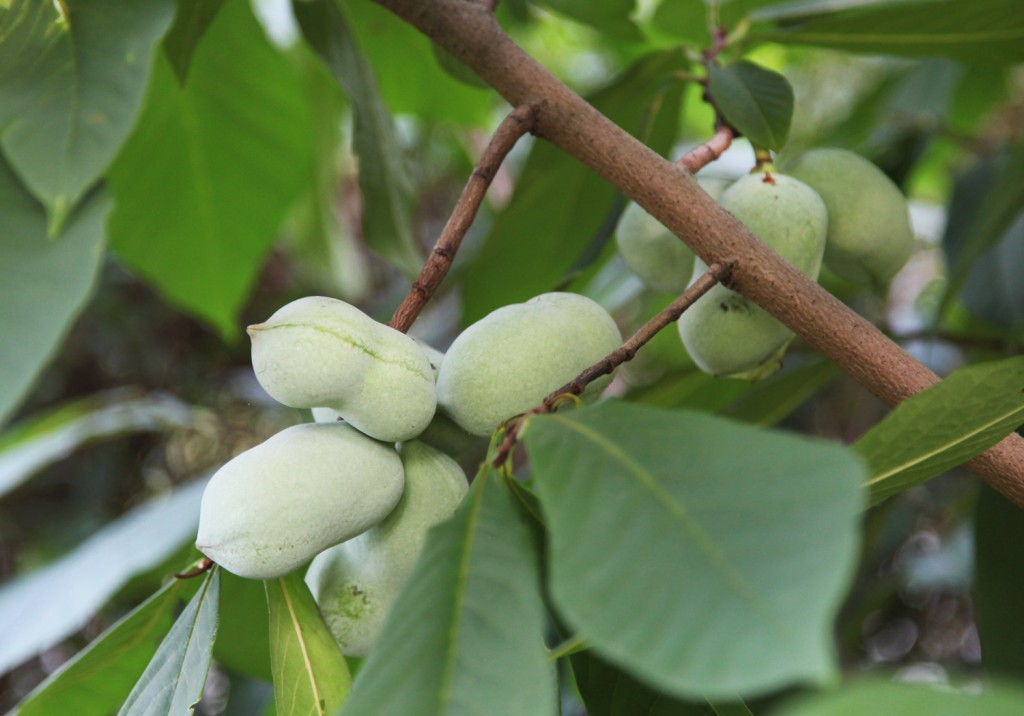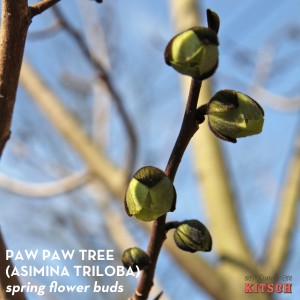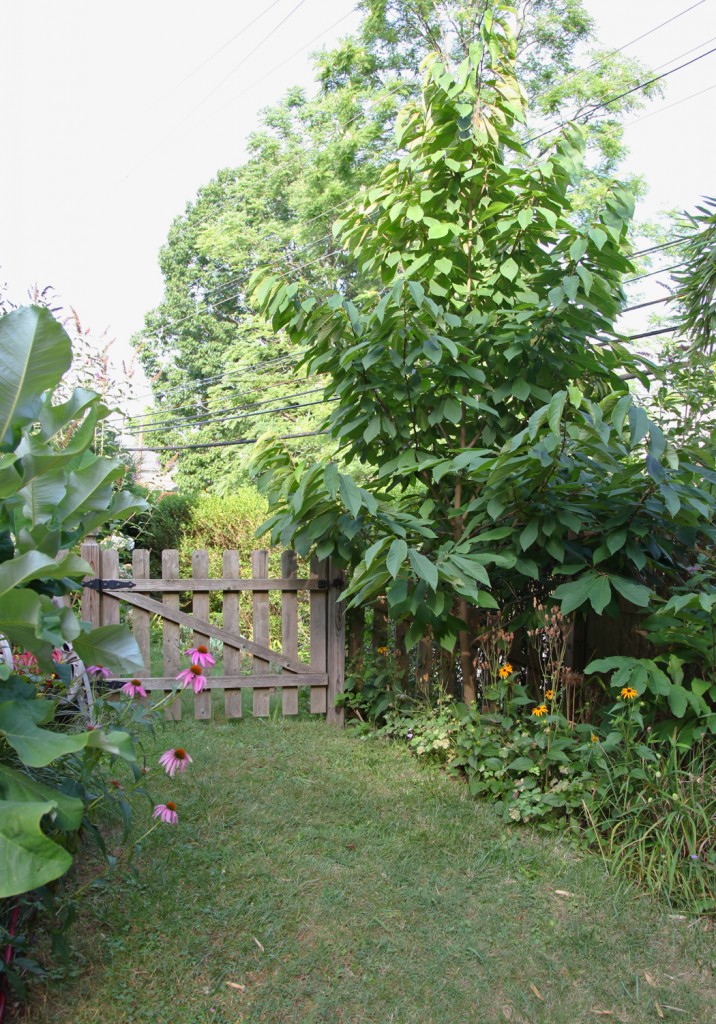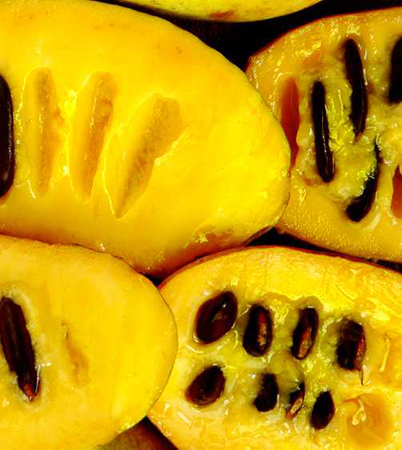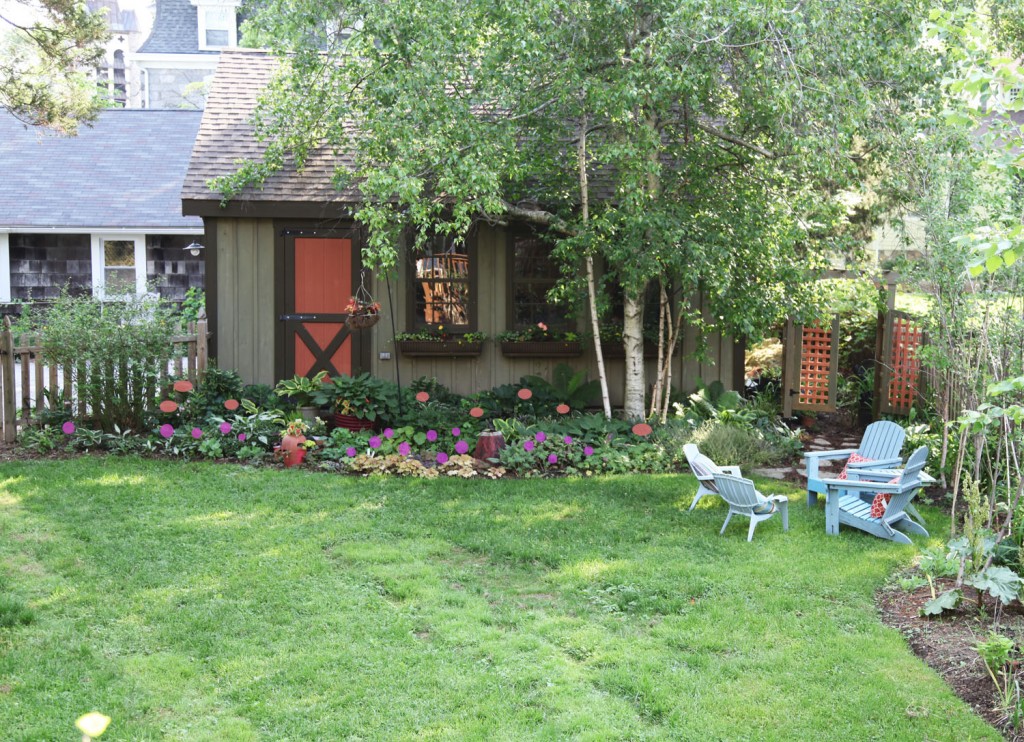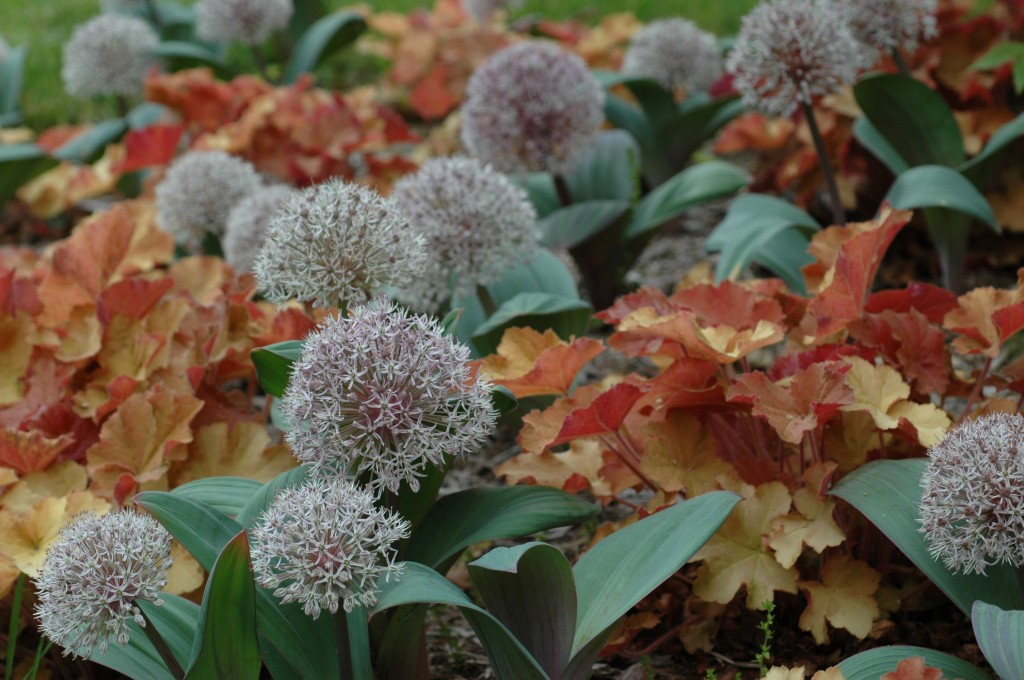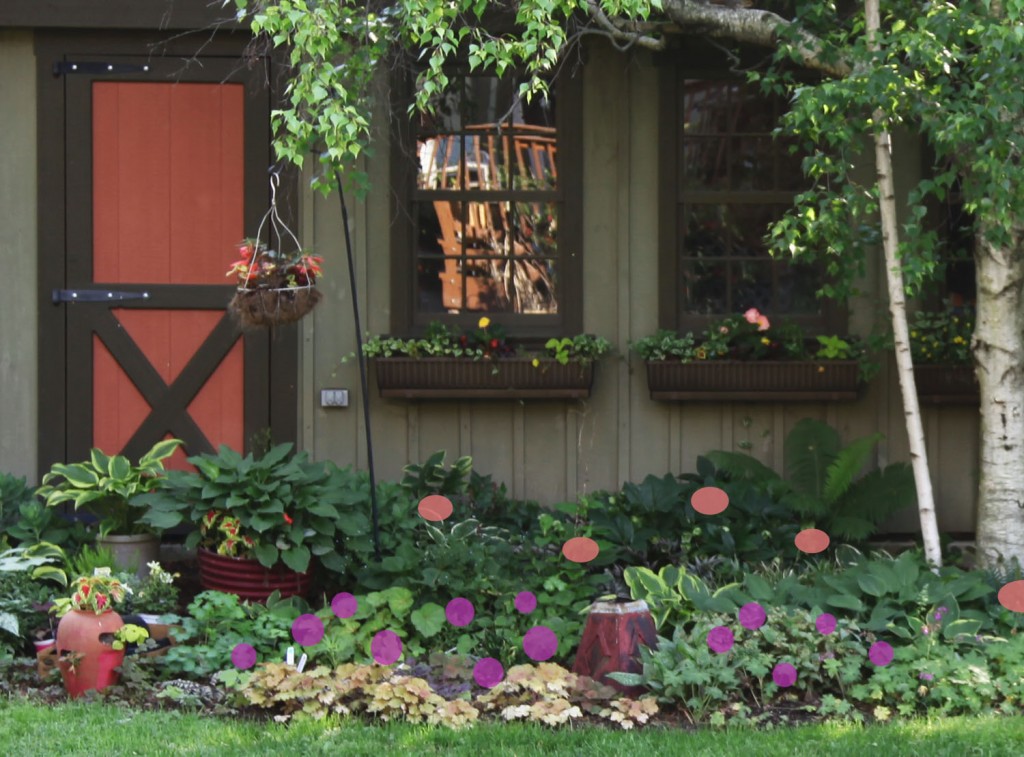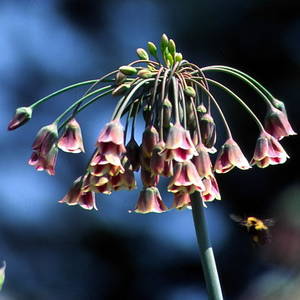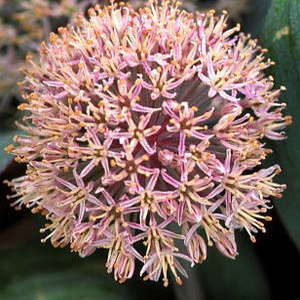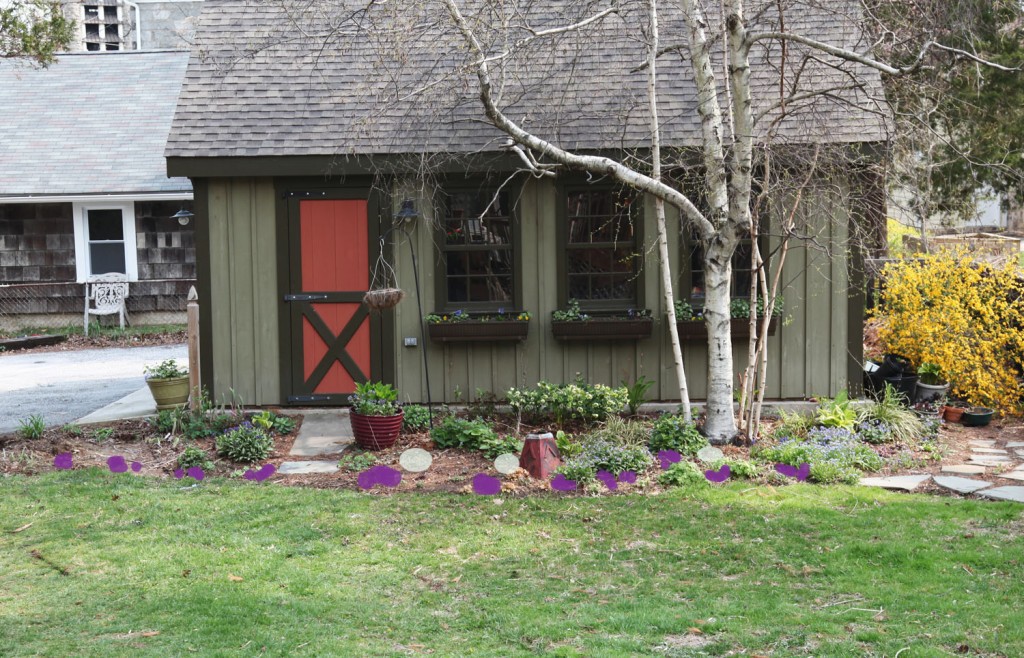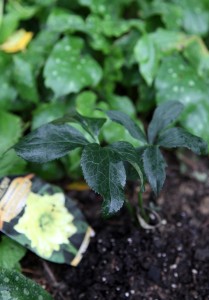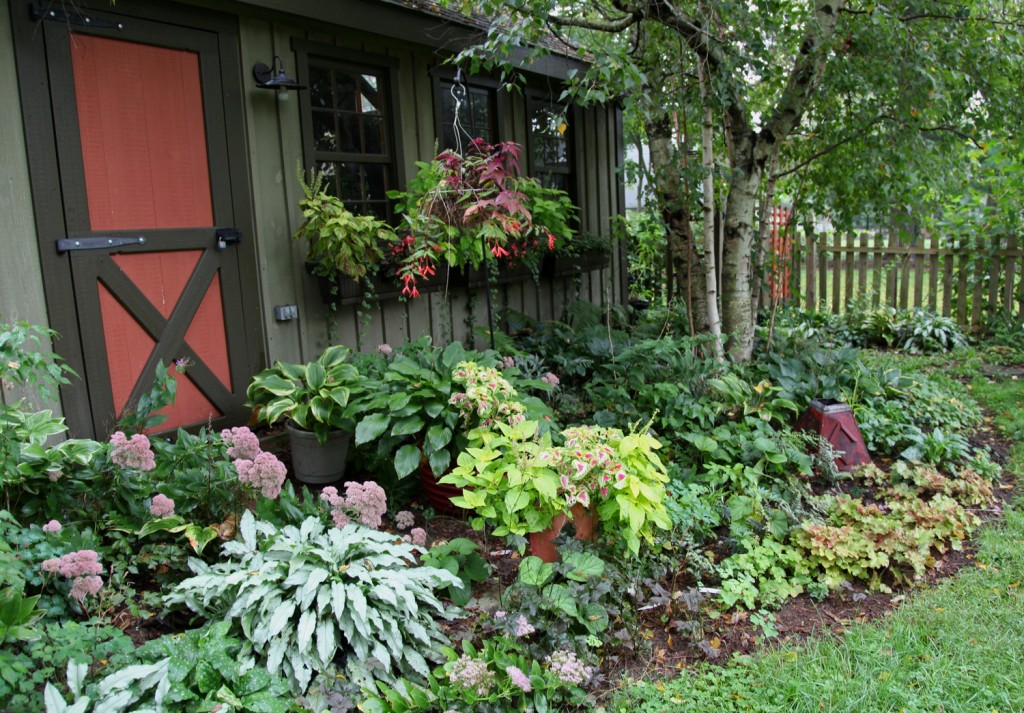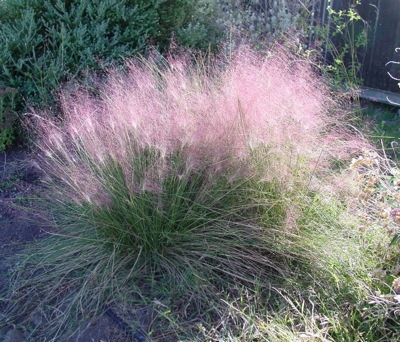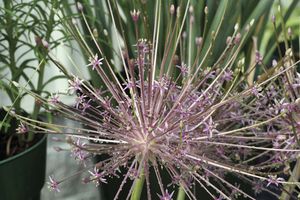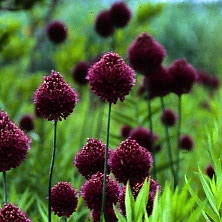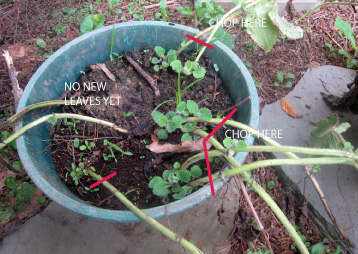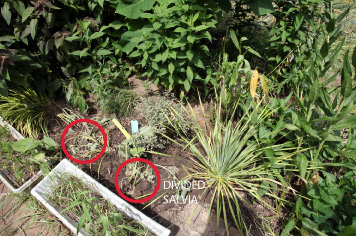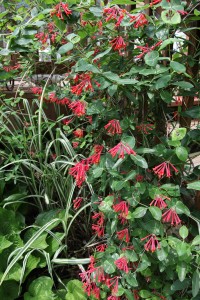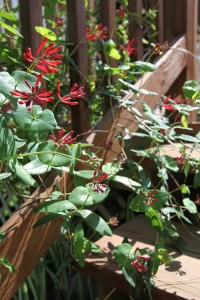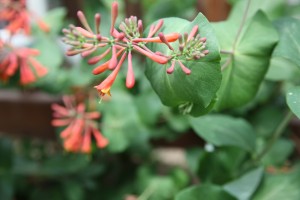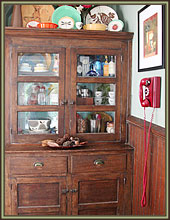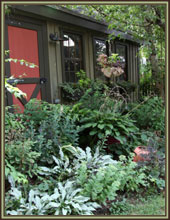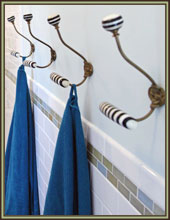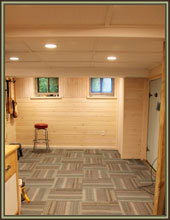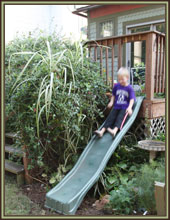One of the questions I get most often when people visit my garden is about my pawpaw tree. What is it? What are those weird potato looking fruits? What does pawpaw taste like?
I first came across the PawPaw tree (Asimina triloba) in my tropical garden phase about 7 years ago. Here was a plant that is totally native (to most of the eastern US), but had tropical qualities including a fruit I had never heard of! Fortunately at the Scott Arboretum plant sale (held every other year) they usually have small trees for sale. I patiently planted one almost 7 years ago and waited and waited. Meanwhile I had never actually tasted this custardy fruit (I went purely on the what I could find online). About 4 years ago I finally got to taste one (from the Farmer’s Market in Reading Terminal). I bought it home and cut it open. It wasn’t as good as I was expecting. It was soft, mushy and messy and it had giant seeds inside which made it even harder to eat. I thought that maybe I had made a mistake and I was going to end up with fruit that I didn’t actually like but took solace in the fact that it was a pretty tree. It wasn’t until another year when we got a lone pawpaw off of our tree (the squirrels ate a lot of the flowers in the spring). Again I thought the taste was okay, but not everything I hoped for. Finally last year, when we had 5 or 6 ripe fruits, I actually tasted one to my liking. I am pretty sure now that I didn’t let it ripen enough. I had been waiting for them to be soft to the touch like a peach, but I think pawpaws are actually better once they are all brown and look like they are going bad. I cut one of my brown fruits up (thinking that I would probably be throwing it out)and tried it, and discovered that it was in fact quite tasty! It had a tropical flavor of a mix between a banana and a papaya I thought. Of course this was the last of my fruit for the year, so I have be anxiously awaiting this years fruit to see how it tastes! Fortunately this year it looks like we have about 20 or so fruits ripening.
So why plant it? First of all because it is a lovely medium size native flowering tree (in fact the Zebra Swallowtail Butterfly only lays eggs on this type of tree). Secondly because it provide a fruit that you can’t buy at the store (or not normally at the Farmer’s Market either). I had one of the Amish farmers from our Farmer’s Market tell me last year that they keep the pawpaws to themselves and make pawpaw butter. Third it is really interesting tree and fruit and a good topic of conversation (interesting fact: it is the largest edible ingenious fruit in the US). Another benefit is that it is a really good source of vitamins.
In my research I discovered that it was an important source of food for the Native Americans and early settlers and that is was a popular tree on farms though out the US (Lewis and Clark wrote that they were quite fond of them as was Jefferson). It lost popularity in the last 75 years as produce began to be shipped. These potato looking fruits bruise easily and are not the most attractive looking specimen. Apparently there area lots of old farm cookbooks that have recipes. The good news is that there is a small cult following of pawpaws. There is even an annual festival in Ohio every year. I found this interesting article which includes a recipe for PawPaw Ice Cream. I think I will be making some later this summer!
I have about 10 seeds saved in the fridge from last year. I am thinking of trying to grow them to see how many I can get to germinate. So please let me know if anyone is interested in giving one a try and I will send you a seed to grow yourself!
Here are a few more interesting PawPaw Links:

